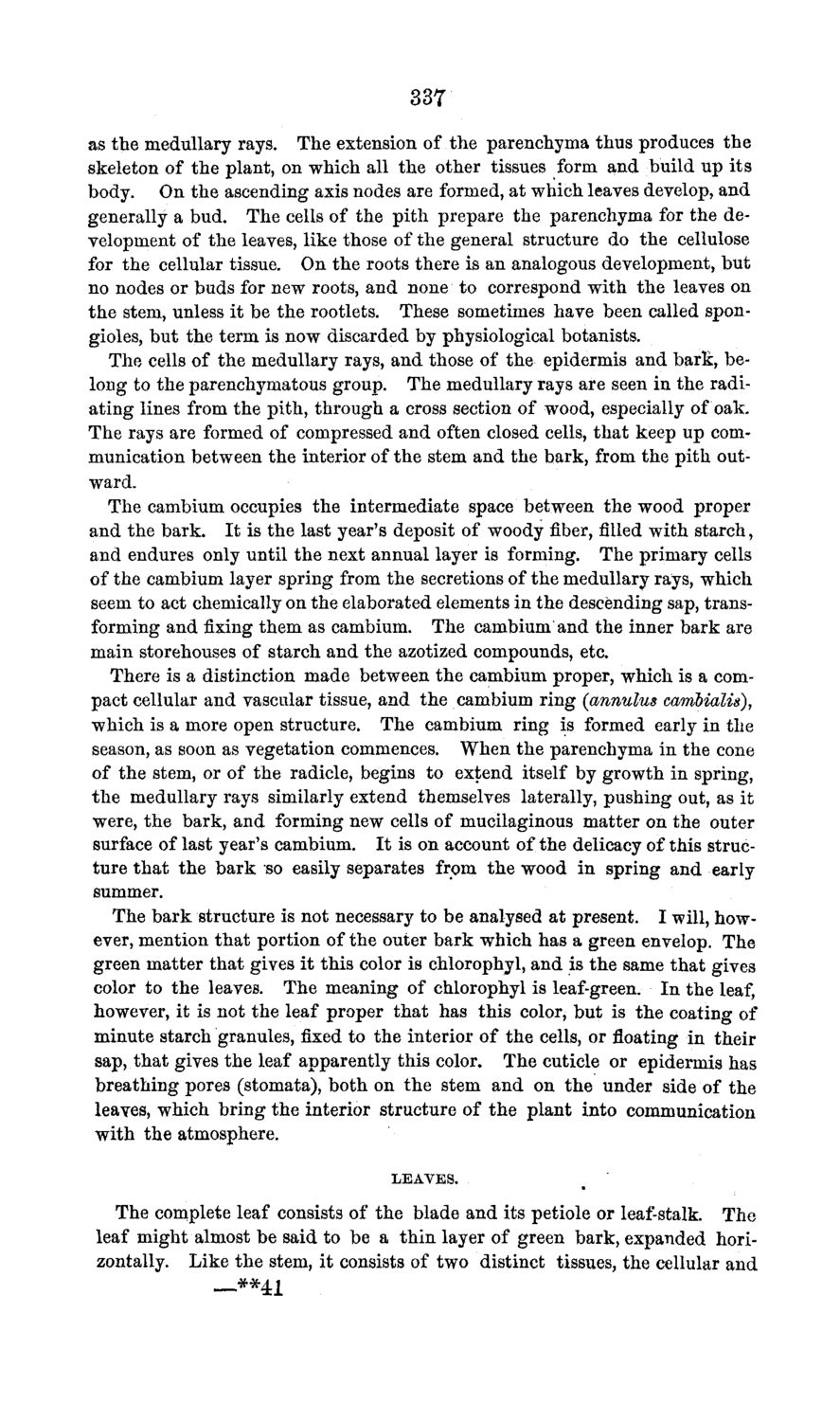| |
| |
Caption: Board of Trustees Minutes - 1869
This is a reduced-resolution page image for fast online browsing.

EXTRACTED TEXT FROM PAGE:
337 as the medullary rays. The extension of the parenchyma thus produces the skeleton of the plant, on which all the other tissues form and build up its body. On the ascending axis nodes are formed, at which leaves develop, and generally a bud. The cells of the pith prepare the parenchyma for the development of the leaves, like those of the general structure do the cellulose for the cellular tissue. On the roots there is an analogous development, but no nodes or buds for new roots, and none to correspond with the leaves on the stem, unless it be the rootlets. These sometimes have been called spongioles, but the term is now discarded by physiological botanists. The cells of the medullary rays, and those of the epidermis and bark, belong to the parenchymatous group. The medullary rays are seen in the radiating lines from the pith, through a cross section of wood, especially of oak. The rays are formed of compressed and often closed cells, that keep up communication between the interior of the stem and the bark, from the pith outward. The cambium occupies the intermediate space between the wood proper and the bark. It is the last year's deposit of woody fiber, filled with starch, and endures only until the next annual layer is forming. The primary cells of the cambium layer spring from the secretions of the medullary rays, which seem to act chemically on the elaborated elements in the descending sap, transforming and fixing them as cambium. The cambium and the inner bark are main storehouses of starch and the azotized compounds, etc. There is a distinction made between the cambium proper, which is a compact cellular and vascular tissue, and the cambium ring (annulus cambialis), which is a more open structure. The cambium ring is formed early in the season, as soon as vegetation commences. When the parenchyma in the cone of the stem, or of the radicle, begins to extend itself by growth in spring, the medullary rays similarly extend themselves laterally, pushing out, as it were, the bark, and forming new cells of mucilaginous matter on the outer surface of last year's cambium. It is on account of the delicacy of this structure that the bark so easily separates from the wood in spring and early summer. The bark structure is not necessary to be analysed at present. I will, however, mention that portion of the outer bark which has a green envelop. The green matter that gives it this color is chlorophyl, and is the same that gives color to the leaves. The meaning of chlorophyl is leaf-green. In the leaf, however, it is not the leaf proper that has this color, but is the coating of minute starch granules, fixed to the interior of the cells, or floating in their sap, that gives the leaf apparently this color. The cuticle or epidermis has breathing pores (stomata), both on the stem and on the under side of the leaves, which bring the interior structure of the plant into communication with the atmosphere. LEAVES. The complete leaf consists of the blade and its petiole or leaf-stalk. The leaf might almost be said to be a thin layer of green bark, expanded horizontally. Like the stem, it consists of two distinct tissues, the cellular and ##4i
| |